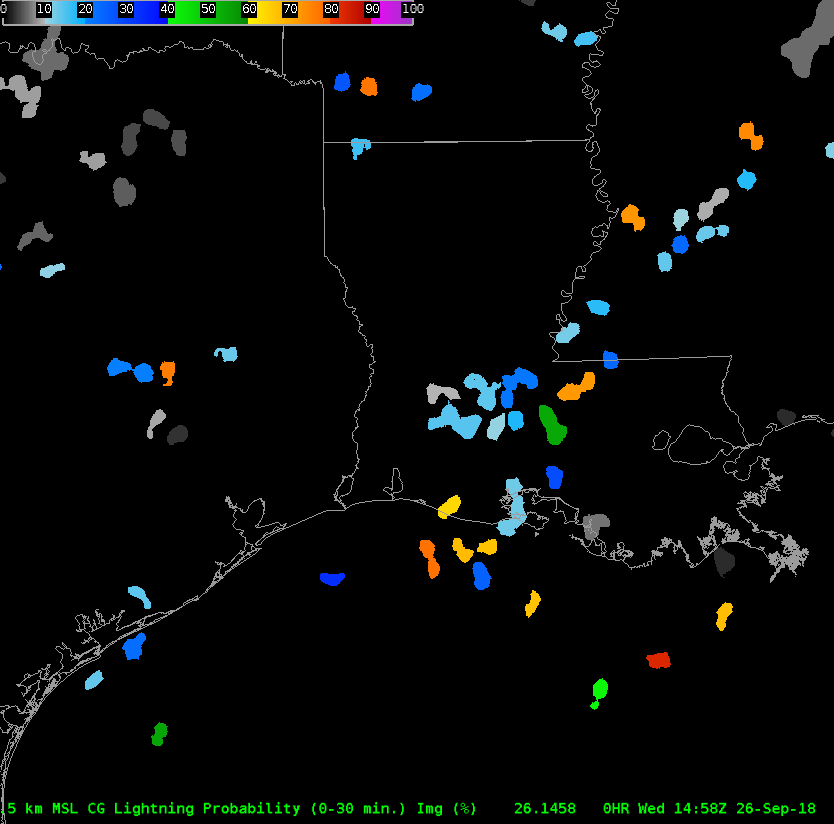Lightning Probability - Warning Decision Training Division (WDTD)
Navigation Links
Products Guide
Lightning Probability
Short Description
Probability of cloud-to-ground (CG) lightning at a given location over the next 30 minutes and next 60 minutes.
Subproducts
Lightning Probability Next 30 minutes
Lightning Probability Next 60 minutes
Primary Users
NWS: WFO, CWSU, AWC, SPC
FAA: Tower, TRACON, ARTCC, ATCSCC, AFSS
Other: EM
Input Sources
Earth Network’s In-Cloud Lightning
Vaisala’s Cloud-to-Ground Lightning
MRMS products including Maximum Estimated Size of Hail (MESH) and Vertically Integrated Liquid (VIL)
Near-Storm Environmental Data
Resolution
Spatial Resolution: 0.01o Latitude (~1.11 km) x 0.01o Longitude (~1.01 km at 25oN and 0.73 km at 49oN)
Temporal Resolution: 2 minutes
Product Creation
The cloud-to-ground (CG) lightning probability product was created using "random forest" machine learning methodology. With storm-based inputs of Earth Network’s in-cloud lightning, Vaisala’s cloud-to-ground lightning, MRMS products including the Maximum Estimated Size of Hail (MESH) and Vertically Integrated Liquid (VIL), and near storm environmental data including lapse rate and CAPE, a random forest algorithm was trained to produce probabilities of CG lightning.
Technical Details
Latest Update: MRMS Version 12




